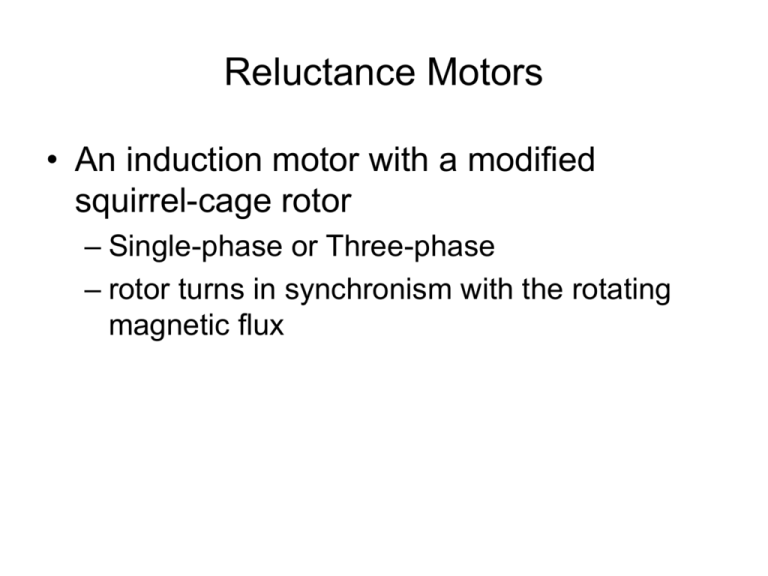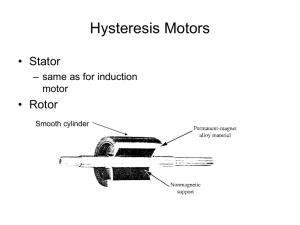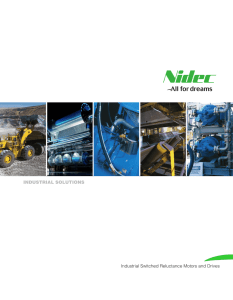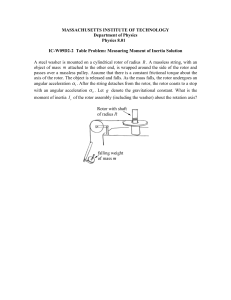Reluctance Motors
advertisement

Reluctance Motors • An induction motor with a modified squirrel-cage rotor – Single-phase or Three-phase – rotor turns in synchronism with the rotating magnetic flux Notch-Type Rotor • “Notch” areas are “High-Reluctance” • “Pole” areas are known as “Salient” Poles – Number of salient poles must match the number of stator poles Flat and Barrier Slot Rotors Operation • Rotor accelerates towards synchronous speed • At a “critical” speed, the low-reluctance paths provided by the salient poles will cause them to “snap” into synchronism with the rotating flux. Operation (continued) • When the rotor synchronizes, slip is equal to zero • Rotor pulled around by “reluctance torque” • Figure at right shows the rotor synchronized at no load Operation (continued) • A “step” increase in load slows the rotor down, and the rotor poles “lag” the stator poles. • The angle of lag, δ, is called the “torque angle”. • The maximum torque angle, δmax = 45°. Operation at maximum load • Maximum load is when δ = 45°. • If load increases so that δ>45°, the flux path is “over stretched” and the rotor falls out of synchronism. • Motor runs at slip speed Reluctance torque, Trel 2 Trels0 V K sin(2 rel ) f Trel = average value of reluctance torque V = applied voltage (V) f = line frequency (Hz) δrel = torque angle (electrical degrees) K = motor constant Reluctance torque, Trel • Maximum reluctance torque, Trelmax occurs at δrel = 45°











